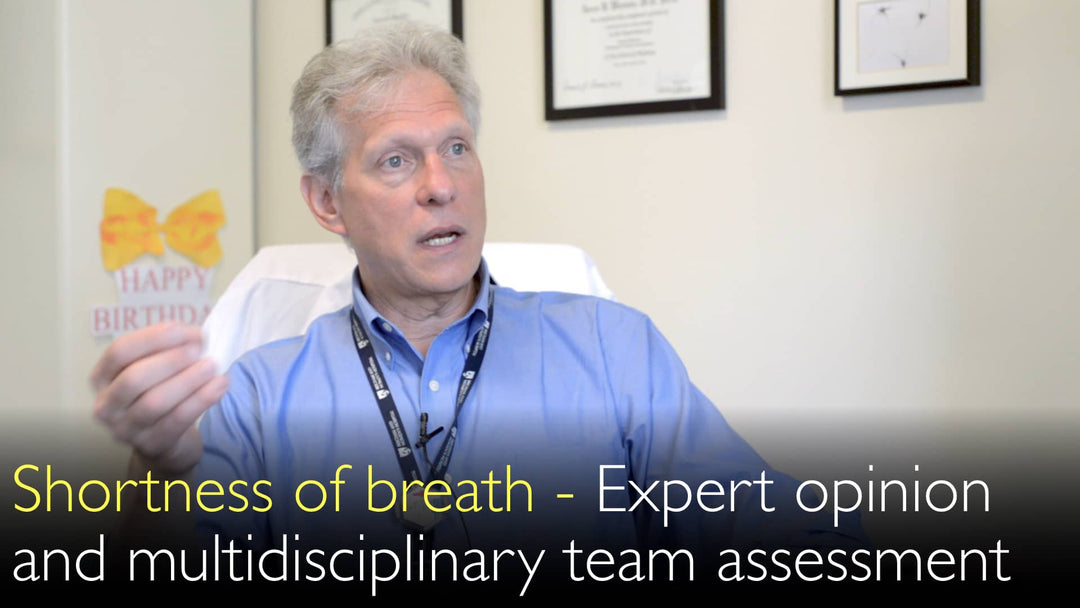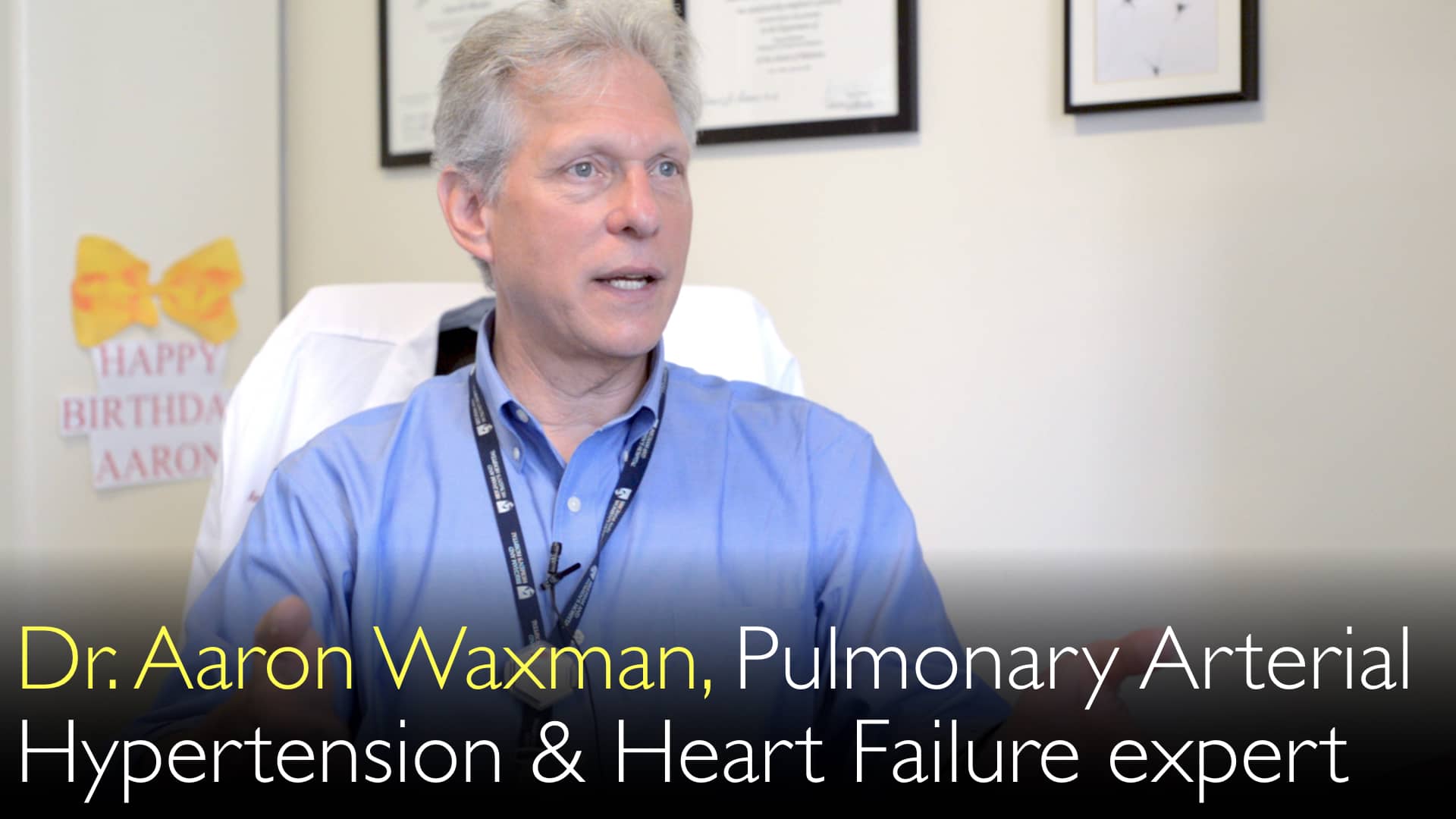מומחה מוביל במחלות כלי דם ריאתיות וקוצר נשימה, ד"ר אהרון וקסמן, MD, מסביר את העיכובים הקריטיים באבחון קוצר נשימה. מטופלים לרוב ממתינים שנתיים ומוציאים מעל 100,000$ על בדיקות חוזרות ולא חד-משמעיות. ד"ר וקסמן תומך בגישה רב-מקצועית לצוות כדי לפרק את המחיצות בין המומחיות. התוכנית שלו יכולה בדרך כלל לספק אבחנה נכונה תוך שישה שבועות. מציאת המומחה הנכון מוקדם חוסכת זמן ניכר, כסף, וסבל למטופל.
אבחון קוצר נשימה בלתי מוסבר: גישה רב-מקצועית
קפיצה לפרק
- עיכובים באבחון ועלויות
- מלכודות התמחויות רפואיות מבודדות
- יתרון הצוות הרב-מקצועי
- ערך חוות דעת מומחה שניה
- פרוטוקולי טיפול ותוצאות
- תמליל מלא
עיכובים באבחון ועלויות גבוהות לקוצר נשימה
חולים עם קוצר נשימה בלתי מוסבר עומדים בפני דרך ארוכה ויקרה לאבחון נכון. ד"ר אהרון וקסמן, MD, מציין כי הזמן הממוצע עד לאבחון הוא כשנתיים מהופעת התסמינים הראשונית. בתקופה זו, חולים עוברים לעתים קרובות אינספור בדיקות. הנטל הכספי עצום, עם עלויות המגיעות לרוב בין 100,000$ ל-150,000$.
מלכודות התמחויות רפואיות מבודדות
מכשול מרכזי לאבחון יעיל הוא האופי המבודד של התמחויות רפואיות. ד"ר אהרון וקסמן, MD, מסביר כי רופאים נוטים לשייך חולים לאבחנות שכיחות בתחום התמחותם. גישה זו עלולה להיות שגויה לחלוטין עבור הגורם האמיתי לקוצר הנשימה של החולה. כאשר רופא אינו יכול לטפל בתסמין, הוא מזמין לעתים קרובות בדיקות נוספות, כולל כאלו שכבר בוצעו ולא סיפקו תשובה. מעגל זה מבזבז זמן יקר ומשאבים.
יתרון הצוות הרב-מקצועי לדיספניאה
הפתרון לאתגרי האבחון הוא צוות שיתופי ורב-מקצועי. ד"ר אהרון וקסמן, MD, מוביל תוכנית ייחודית הכוללת פולמונולוגים, קרדיולוגים, ראומטולוגים, רדיולוגים וכירורגים. צוות זה חוצה גבולות מסורתיים של התמחויות כדי לחשוב בצורה רחבה יותר על כל מקרה. גישה פתוחה זו חיונית לחקירת תסמינים מורכבים באופן יסודי. היא גם מייצרת שאלות מחקר חשובות לקידום התחום.
ערך חוות דעת מומחה שניה
חיפוש אחר חוות דעת רפואית שניה ממומחה מרחוק יכול לקצר drasticamente את המסע האבחוני. ד"ר אהרון וקסמן, MD, מדגיש כי חולים צריכים לנסות למצוא את המומחה הרפואי הנכון לתסמינים שלהם מוקדם ככל האפשר. שליחת תיקים רפואיים למרכז מומחים לבדיקה יכולה לחסוך שנים של תסכול והוצאה עצומה. ד"ר אנטון טיטוב, MD, וד"ר וקסמן מסכימים כי זהו יישום חזק של טכנולוגיה מודרנית בתחום הבריאות.
פרוטוקולי טיפול מותאמים אישית ותוצאות
אבחון נכון מוביל ישירות לטיפול יעיל ומותאם אישית. ד"ר אהרון וקסמן, MD, מציין כי לצוות שלו יש פרוטוקול טיפול לכל אבחנה שהם מגלים. הגישה שלהם מבוססת על הבנת הפיזיולוגיה של קוצר הנשימה, המאפשרת טיפול גמיש ומותאם. בעוד שתיאום תורים יכול להיות אתגר, התוכנית שואפת לספק אבחנה תוך כשישה שבועות מההערכה. תוצאה מהירה זו מאפשרת לחולים להתחיל את הטיפול הנכון בזמן הנכון.
תמליל מלא
ד"ר אנטון טיטוב, MD: חולים עם קוצר נשימה משקיעים שנתיים כדי לקבל אבחנה נכונה. הם often מוציאים עד 150,000$ על בדיקות אבחון וייעוצים. רופאים often חוזרים על אותן בדיקות even though בדיקות אלו לא סיפקו תשובה.
מומחה מוביל למחלות ריאות מסביר. קוצר נשימה הוא תסמין כה שכיח. הדרישה לאבחן קוצר נשימה properly היא נקודה very חשובה. Because זה important לחקור קוצר נשימה thoroughly and עם open mind.
ד"ר אהרון וקסמן, MD: רופא cannot לשייך חולה לאבחנה שכיחה. האבחנה עלולה להיות שגויה; ייתכן שאין לה anything to do עם הגורמים לקוצר הנשימה של החולה. This is the biggest problem שיש לנו in many aspects of רפואה. It is how we have בודדנו our התמחויות.
Here is a unique feature of our תוכנית כלי דם ריאתיים and our תוכנית דיספניאה. We are a group of clinicians that includes פולמונולוגים, קרדיולוגים, ראומטולוגים, and רדיולוגים. But we cross boundaries of our התמחויות. We even have כירורגים who are part of our clinical group.
It allows us to think much more broadly and open-mindedly. It also gives us lots of questions that we can then address from a research standpoint.
ד"ר אנטון טיטוב, MD: This is the theme that I clearly hear from many medical experts. A multidisciplinary approach to diagnosis. This is crucial for finding the best treatment for any disease.
ד"ר אהרון וקסמן, MD: Yes. It is the only way forward in medicine. A patient might have experienced certain symptoms. Some physicians then tell this patient, "Oh, you have this or you have that diagnosis.” It may be worthwhile to investigate the symptoms in more detail.
It’s crucial to find the right expert. An expert who will dig into the real causes of the patient’s symptoms. It is not easy to make a correct diagnosis, but nevertheless it is worthwhile for the patient.
We went back and looked at our patient population. We probably see on the order of two or three hundred new patients every year with unexplained shortness of breath.
We are following well over a thousand patients at this point. We learned that the average time to diagnosis for the patients with shortness of breath is about two years. This is the patients we have seen.
Time period to diagnosis means from the time patients started to complain of breathlessness to the time they got to our evaluation. These patients have been complaining of shortness of breath for at least two years.
Over those two years, many times people have spent upwards of $100,000 to $150,000 on diagnostic testing.
Physicians were repeating diagnostic tests over and over again. Because physicians want to do something for the patient. If a physician cannot treat something, they are often going to order a diagnostic test.
Even though that diagnostic test has been done before. Even if it hasn't shown an answer. It is what the physicians are comfortable with. They are comfortable with repeating the same diagnostic tests again and again.
A lot of money is spent. A lot of time is wasted in getting these patients a correct diagnosis. Patients could have used modern technology to get the correct diagnosis.
Patients could receive a remote expert medical opinion. They could send the medical information to the correct expert in shortness of breath diagnosis. Patients with shortness of breath should try to find the correct medical expert to find a cause of their symptoms.
It could have saved both time and money. Getting the right diagnosis means receiving appropriate treatment for shortness of breath at the right time.
ד"ר אנטון טיטוב, MD: Correct! That is the key.
ד"ר אהרון וקסמן, MD: For us, by the time a patient knocks at our door, we can usually give that patient a correct diagnosis. Only because the scheduling issues could be a problem. We are booked out for patient appointments months in advance now.
Within six weeks, we can usually give a correct diagnosis to any patient with shortness of breath. For every diagnosis we find, we do have a treatment protocol. Effective treatments are evolving as time goes on.
We have learned a lot about these diagnoses. We are thinking about treatment for shortness of breath on a physiologic basis. It allows us to be flexible and to tailor therapy to that patient.
It pays to get to the correct experts! Everything is about finding the right person.





